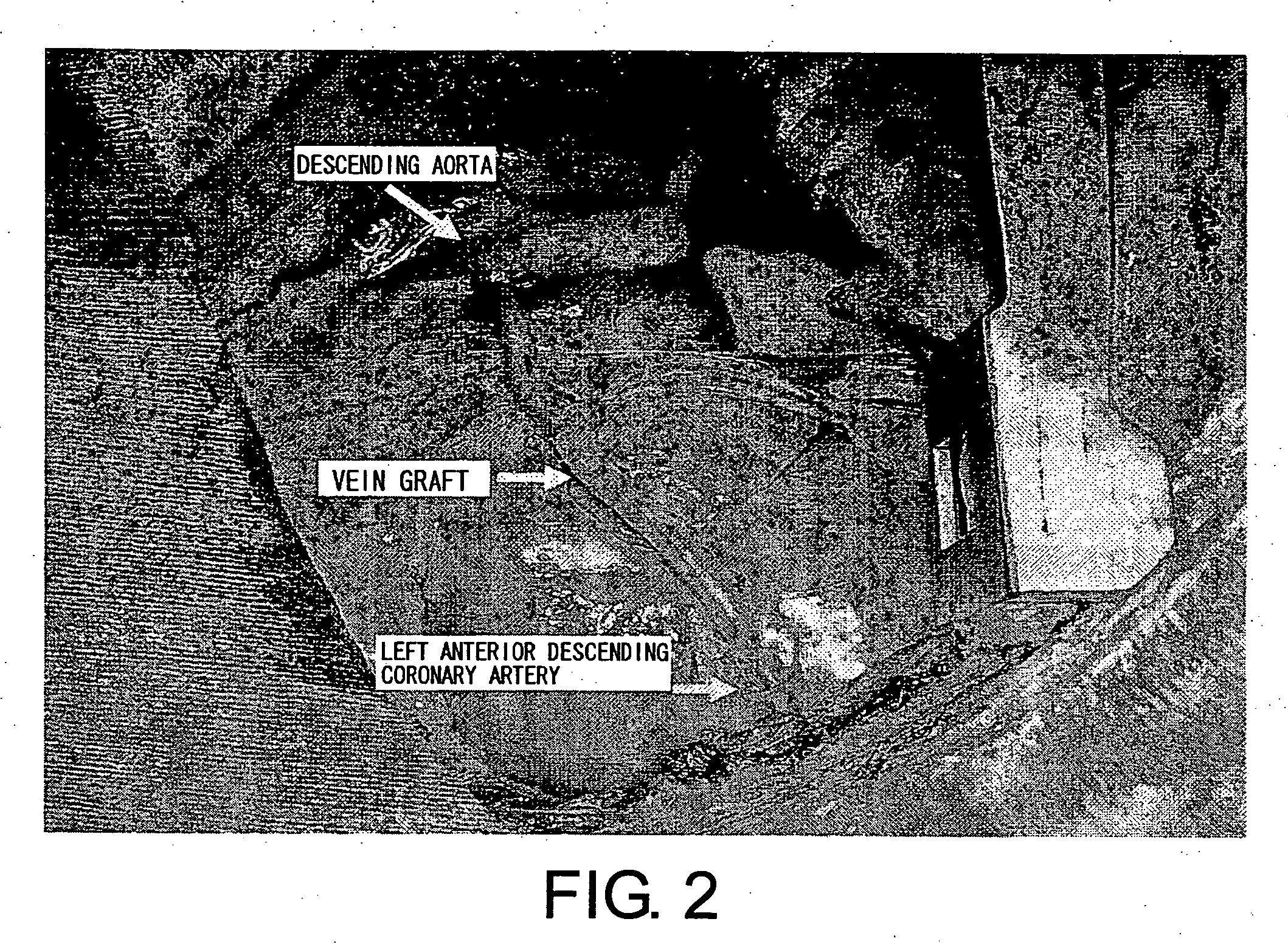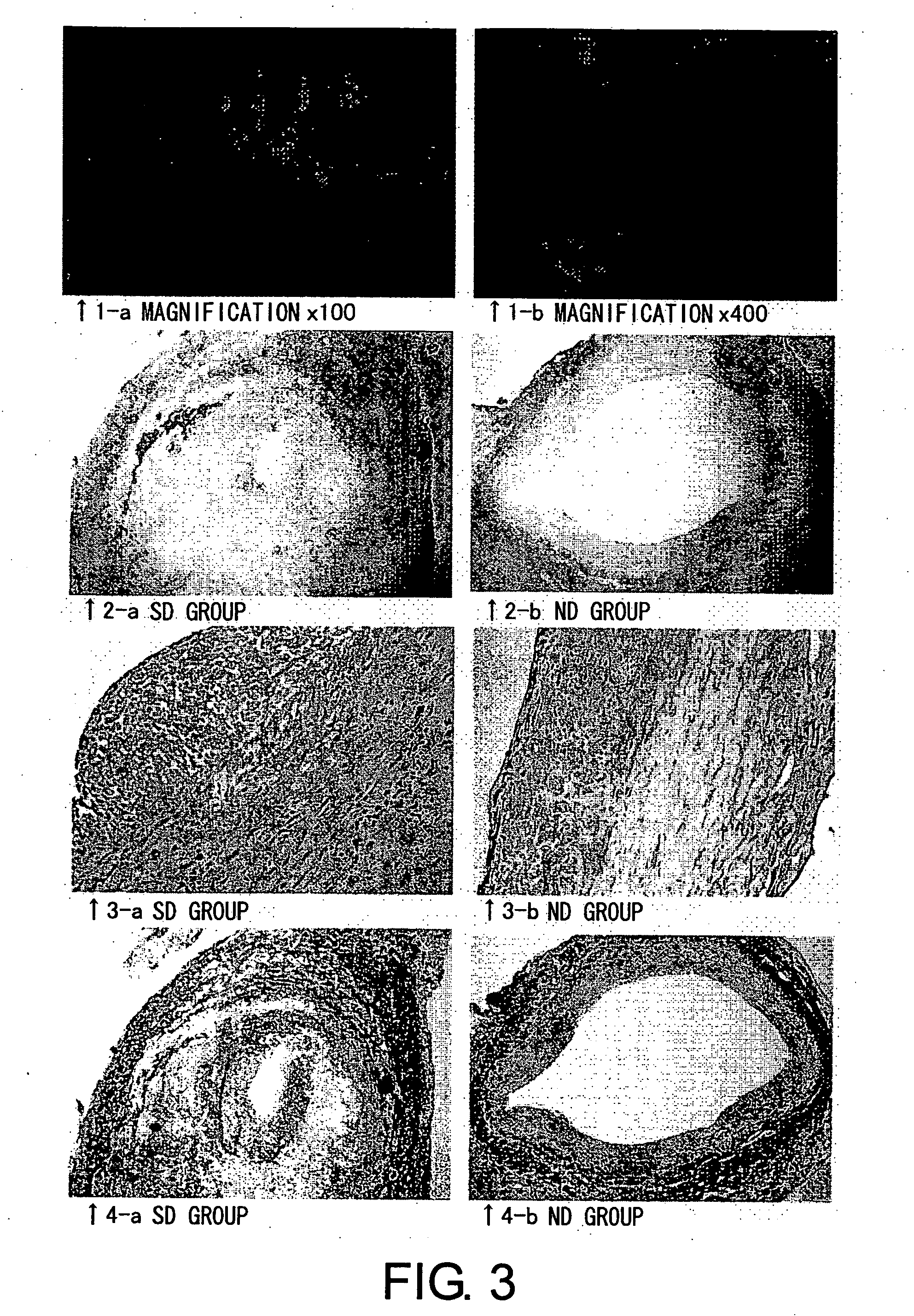Agents for protection from neointimal formation in grafts comprising an nfkappab decoy
a technology of neointimal formation and agent, which is applied in the field of agents for protecting against neointimal formation in grafts comprising an nfkappab decoy, can solve problems such as becoming clinically important problems, and achieve the effects of reducing vgds, suppressing nfb activation, and suppressing excessive neointimal formation in svgs used in cabg
- Summary
- Abstract
- Description
- Claims
- Application Information
AI Technical Summary
Benefits of technology
Problems solved by technology
Method used
Image
Examples
Embodiment Construction
[0033] 1) Decoy Preparation
[0034] Double-stranded oligonucleotides with the following sequences were used in the experiment:
NFκB decoy:(SEQ ID NO: 2)5′-CCTTGAAGGGATTTCCCTCC-3′3′-GGAACTTCCCTAAAGGGAGG-5′Scrambled decoy:(SEQ ID NO: 3)5′-TTGCCGTACCTGACTTAGCC-3′3′-AACGGCATGGACTGAATCGG-5′
[0035] These decoys were stored at −20° C. until the day of surgery, and then kept at 4° C. until transfection. Decoys were prepared for transfection at room temperature in 0.9% physiological saline injection solution, at a concentration of 40 μmol / L.
[0036] 2) Assessment of Conditions for Pressure-Mediated Transfection
[0037] Mann et al. reported detailed data concerning pressure-mediated transfection (Mann M. J. et al., Proc. Natl. Acad. Sci. USA 96: 6411-6 (1999)). Preliminary examinations of transfection efficiencies at various transfection pressures and times were conducted. These preliminary 25 experiments showed that transfection efficiency at 200 mmHg for 20 minutes was not much different from ...
PUM
| Property | Measurement | Unit |
|---|---|---|
| thick | aaaaa | aaaaa |
| thickness | aaaaa | aaaaa |
| thick | aaaaa | aaaaa |
Abstract
Description
Claims
Application Information
 Login to View More
Login to View More - R&D
- Intellectual Property
- Life Sciences
- Materials
- Tech Scout
- Unparalleled Data Quality
- Higher Quality Content
- 60% Fewer Hallucinations
Browse by: Latest US Patents, China's latest patents, Technical Efficacy Thesaurus, Application Domain, Technology Topic, Popular Technical Reports.
© 2025 PatSnap. All rights reserved.Legal|Privacy policy|Modern Slavery Act Transparency Statement|Sitemap|About US| Contact US: help@patsnap.com



